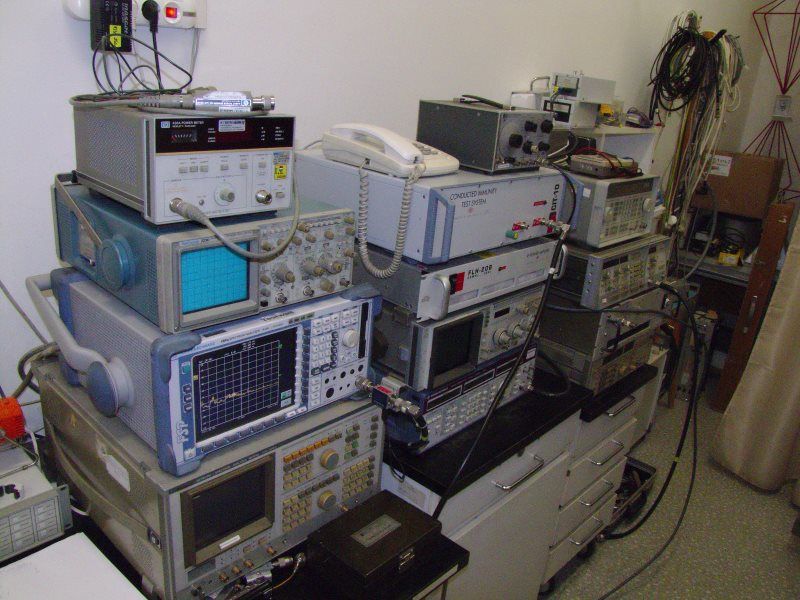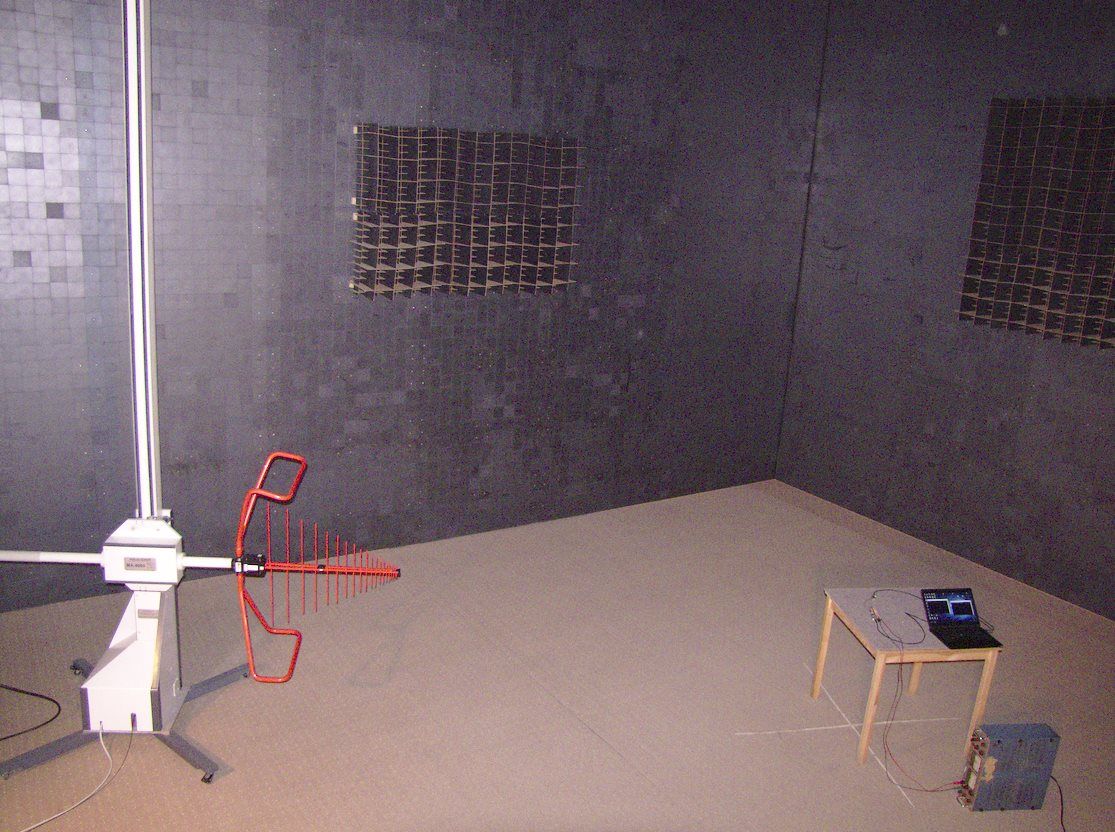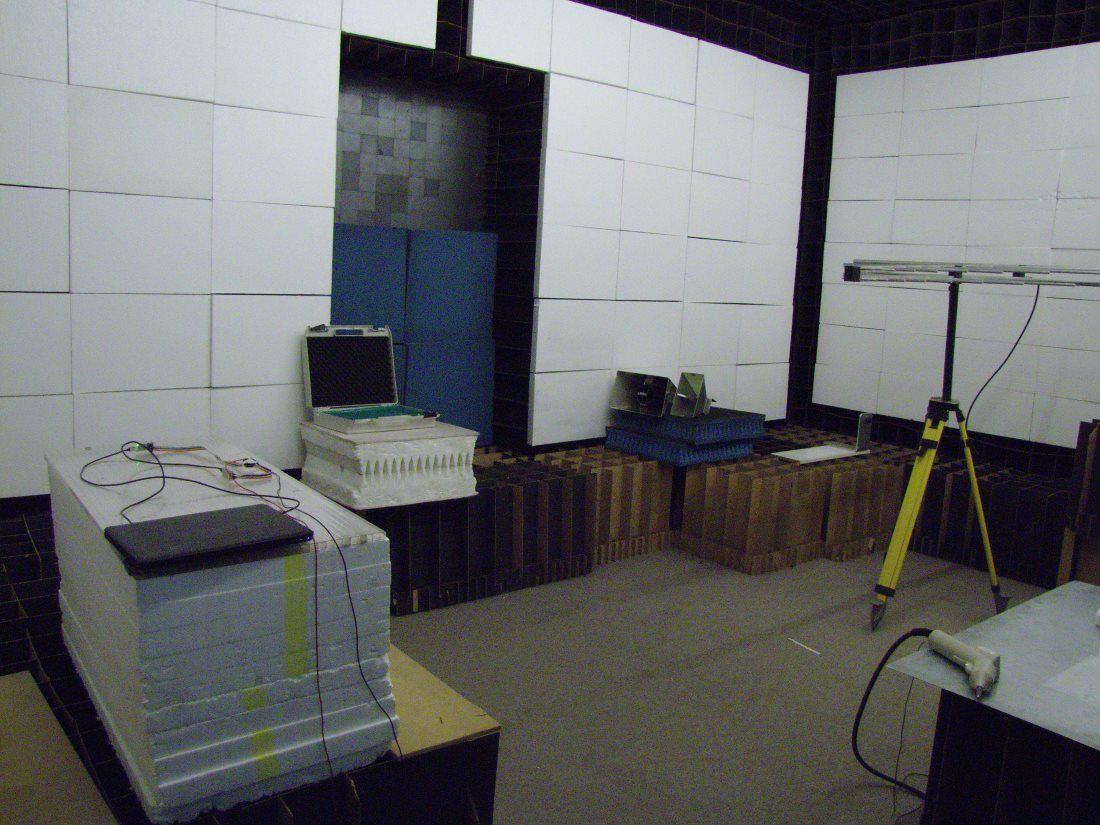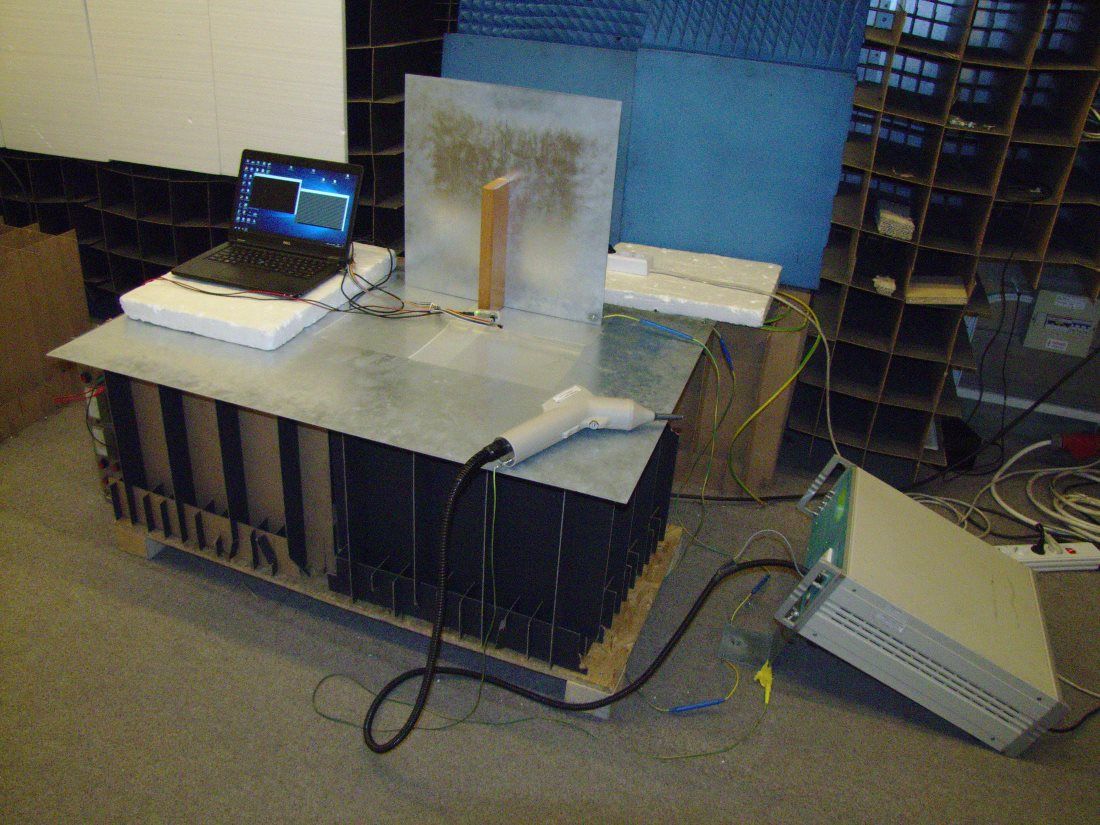Project update 16 of 21
CE and FCC Tests
Hiya!
Early last week I received the new boards - finally! Moreover, I received samples of the injection moulded cases too. You know what this means? It means that I was able to put together μArts that looked and behaved as the ones that will be shipped! I didn’t hesitate then to call the test lab I’d already spoken to earlier, and made an appointment for doing certification tests. That appointment was today :) Wanna know what happened?
But enough teasing you: in short, the μArt passed all tests on the first try. This means I can now go ahead and apply CE and FCC markings to the μArt, certifying that the product meets all required international standards. And this is based not on personal claims and beliefs, but proven by the independent tests done today.
A short intro to markings
CE, FCC, what? I’ll simplify things (so those who do know better, please don’t nitpick), these are logos that you must attach to your products to mark them as having fulfilled specific requirements set by law. You must satisfy said requirements to bring most things to the market legally. The logos tell consumers and authorities that the manufacturer attests to the fulfillment of the requirements (and takes responsibility for it!), but you need to be able to prove your claims when asked or doubted. This is where the certification authorities and lab tests such as those done today on the μArt come into play. They serve as proof that your words are not just empty claims, but have been verified objectively, methodically, and scientifically.
Okay, but what do we test for? Well, the tests and requirements are different for every product type or category, but the tests mainly concern themselves with human health, environmental safety, and basic product reliability. For example, an outdoor beverage cooler has to satisfy a lot more things than a USB-UART adapter has to, being that it is used outdoors and runs on 230 V AC, but it does not need to be made of food-compatible materials like a kitchen hotplate does. Got the gist of it, right? Some "tests" can be fairly are trivial. For example, for environmental safety, I need to make sure that the μArt is RoHS-compliant, meaning that some dangerous materials are not present or are kept at very low levels in the product. This is easier to prove for me than it sounds. All I have to do is provide a complete list of electrical and mechanical components used (more or less this is my BOM anyway), and then show that the manufacturer of each component itself claims that their product is RoHS-compliant (e.g. refer to their datasheets). Other proofs, though, are not so easy, or are outright impossible to make at home or at your company, because they require highly specific knowledge and crazy-expensive equipment. What to do then? You pay for a testing lab which specializes in such tests and already has all the test and measurement tools you’d need. This is the kind of company I visited today.
I’ll note here "silently" that most UART adapters you find on the market have not been put under these tests. Theoretically, as long as they still satisfy the CE/FCC/whatever requirements though, that is not a problem. The problem is, most of them don’t. They either falsely claim CE-conformity (as it is basically impossible to own the ESD tests without proper housing and dedicated components), or they aren’t marked at all. Chances are that unless you’ve bought your current UART adapter from a highly respectable manufacturer, yours is probably illegally on the market, strictly speaking.
Testing the μArt
I arrived at the test lab at 7:30 in the morning. I packed all sorts of stuff with me, various cables, replacement components, capacitor and resistor options, a soldering station, a multimeter, various hardware tools, etc. I was prepared for the worst. This is because when you visit a testing lab, they don’t bill you for the tests, but for allocated time slots. Mine was from 8 am until 12 am. When your product fails a test, you can try to correct the errors right there and repeat the tests until you pass, but you must not overstep your time slot. These labs are often known for not providing any tools to you unless it is needed for their tests, so you must bring everything with yourself to be able to troubleshoot problems and create device variations on the fly, right there, then re-test. Because if your time slot passes without having passed all tests, you have to pay again for a new appointment, which is not only pretty expensive, but it might be weeks in the future.
I walked through a couple of corridors and rooms, seeing all kinds of rigs. In one of the rooms I passed through, there was a test engineer working on something, and he had a "few" pieces of equipment he needed from time-to-time. What we see in the picture below of his bench is probably worth a hundred thousand dollars. And that’s only at that single engineer’s table.
After finally arriving and meeting up with the person assigned to me, we started by clarifying which so called "harmonized" standards we need to fulfill (designated by cryptic codenames such as "EN 55032" and "IEC 61000-4-2") and how to use the product during the tests. Everything else is dictated by the standards, and your operator at the lab has the job of knowing all those things. They will tell you what you need to comply with, they will know how to test properly by the book, and they will know how to operate their equipment.
The first tests were about EMC, or Electromagnetic Compatibility. The job here is to make sure that the product does not, wantingly or unwantingly, emit elecromagnetic waves that might disturb the operation of other devices. This is tested by measuring the waves emitted by your product during operation, and the measured field strengths need to stay under very specific thresholds to pass the tests. I was lead into a large room with special insulation all over the walls that keep external noise out of the room (like noise by electrical wiring in the building, computers and equipment in neighboring offices, etc.), so that electrical noise in that room can only possibly originate from the μArt. There was one more rather obvious thing in that room. An enormous, robot-operated antenna!
I was instructed to place the μArt on a table in front of the antenna, turn on the product (for me, this meant I needed to start a continuous data stream to send and receive bytes on the μArt), we left the room, and closed its giant metallic door - also constructed to keep noise out, of course. The tests then ran for about 5 minutes continuously. During this time, the antenna was moving, recording electromagnetic noise levels at various positions and antenna polarizations, but without human intervention. At the end, out comes a 2D graph on the operator’s computer screen that shows the worst recorded values at every frequency that high-spec antenna could capture. The limits you must not cross are also drawn into the graph, and as long as you are below the limit at any and every point, you are fine. The μArt passed with flying colors, though being a low-speed, low-current device without a lot of ICs, it was kind of expected. Whew, onto the next test.
Or rather, wait! Let’s repeat the same test, but this time with limits required by the FCC (for America), instead of the CE-thresholds for Europe. … A couple of minutes went by again … and the μArt passed. Whew, onto the third test.
And now we’re switching roles. Up to this point we assumed that the μArt could be potentially disturbing a "victim" device (and proved this false), but in this new test, the μArt becomes the victim. This is called EMI (Electromagnetic Immunity) testing, and it is conducted to make sure that other devices operating nearby won’t negatively influence our device’s own function. That is, we want to prove that the μArt is robust enough as far as electromagnetic disturbances are concerned. I am lead into another room, and the setup here is visibly different, but also obviously similar.
Again, we have a room with some funny insulation, an antenna (although much smaller), and my product in front of the antenna. Only this time, the antenna is not recording what the μArt emits, but the opposite - it is doing its best to throw all kinds of electromagnetic nastiness at my μArt, while, at the same time the μArt is doing its usual transmit-receive thingy. The antenna, of course, is well controlled for repeatable experiments as required by the standards, and is actually sweeping through all frequencies from 80 Mhz to 1 Ghz and emitting signals with specific strengths. This, again, takes a few minutes. I pass the test if the μArt sends and receives all the way to the end without any hiccups… which it did! It passed, I mean. But just when I start happily migrating my devices over to the other table, the operator yells at me. "Hold your horses! This was only half the test. Now we repeat with the antenna in vertical position." Oh great. A few minutes pass again while the antenna and computers do their magic, and when the operator tells me "NOW we’re finished", I happily ascertain that the μArt has again performed without any hiccups. Whew, onto the next test.
Now we come to ESD (Electrostatic Discharge) testing, just at the other table in the same room.
Do you know when you’re wearing just the right robes for electrostatic charge to build up on you, and then you touch something and BANG you’ve just zapped yourself (and something, or somebody, else). ESD tests make sure that those kind of discharges won’t influence the μArt during operation, let alone damage it.
My excitement (or rather, stress) reaches its peak. I was kind of expecting that nothing bad would happen at the EMC and EMI tests up to this point, but they still needed to be done (and they’ve been a good reinforcement for me). But ESD is a completely different story. Yes, I did design ESD protection into the μArt. Yes, I did leave enough gap between its enclosure and electronics. Yes, I did the layout carefully. But engineers know that those sparks from the "ESD gun" that is simulating your charged up body can find the most unexpected ways into your circuit, wreaking havoc and causing you to fail the test. Also, the test itself sounds pretty dangerous: test voltages are 4 kV (contact discharge) and 8 kV (air discharge), positive and negative. So four tests are done in total for ESD immunity. Luckily, the sparks contain only very little energy and last only a few microseconds, which makes them manageable in practice despite their high voltage. Air and contact discharge testing are done in slightly different ways, but I won’t go into that now.
The tests look simple: the operator takes the ESD gun, selects the type and level of sparks he wishes to generate, then starts shooting sparks at seemingly random places all over your product. The problem is, the places are not really random. The operator actually has the job to be mean and has to deliberately try to find all the places (gaps, seams, screws, metal parts, thin walls, connectors, cables, etc.) where a spark could potentially enter and ruin your circuit. The gun recharges immediately after each shot, leaving no place on your product untested. Sparks also have this nasty property of automatically finding the most miniature cracks and unforeseen paths into the guts of your gadget even if the operator didn’t hit them right on the spot. I tell you, it’s a mean test :) My point is, of all the tests done in the lab, the ESD was the only one I was really afraid of. And sometimes it was scary. I really saw one or two sparks managing to arch into the inside of the case, and each time I thought "Omg I’m done for." But the μArt just kept on going after each spark, not stopping. Until finally the test was over. "Aaand we’re done. No more tests" - said the man beside me. I felt a big relief.
We exchange a few more words, I pack up, bid farewell, and leave in great happiness. After all, the μArt passed all tests! As a result, later today, I called the assembler and told them there will be no more changes, and I ordered the full volume production of the μArt.
Closing
Now, as for the test results, I’m sure some of you would like to see the full test report. You will, I just haven’t got it myself yet. You see, the tests may be done, but the lab still needs to create the official report, I also need to pay, but for that, I first need to receive the invoice, bla-bla, all bureaucracy. So it will take another week or so until there is a test report that I can show, but I will let you know when that happens, and it will happen, and soon. It will also be uploaded to the μArt’s own microsite, accompanied by a proper and valid Declaration of Conformity for the CE-mark.














